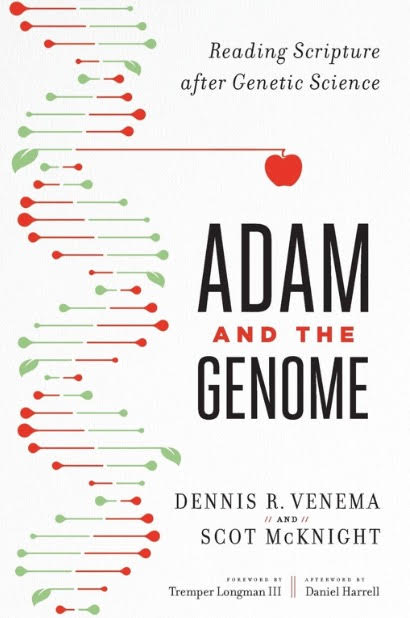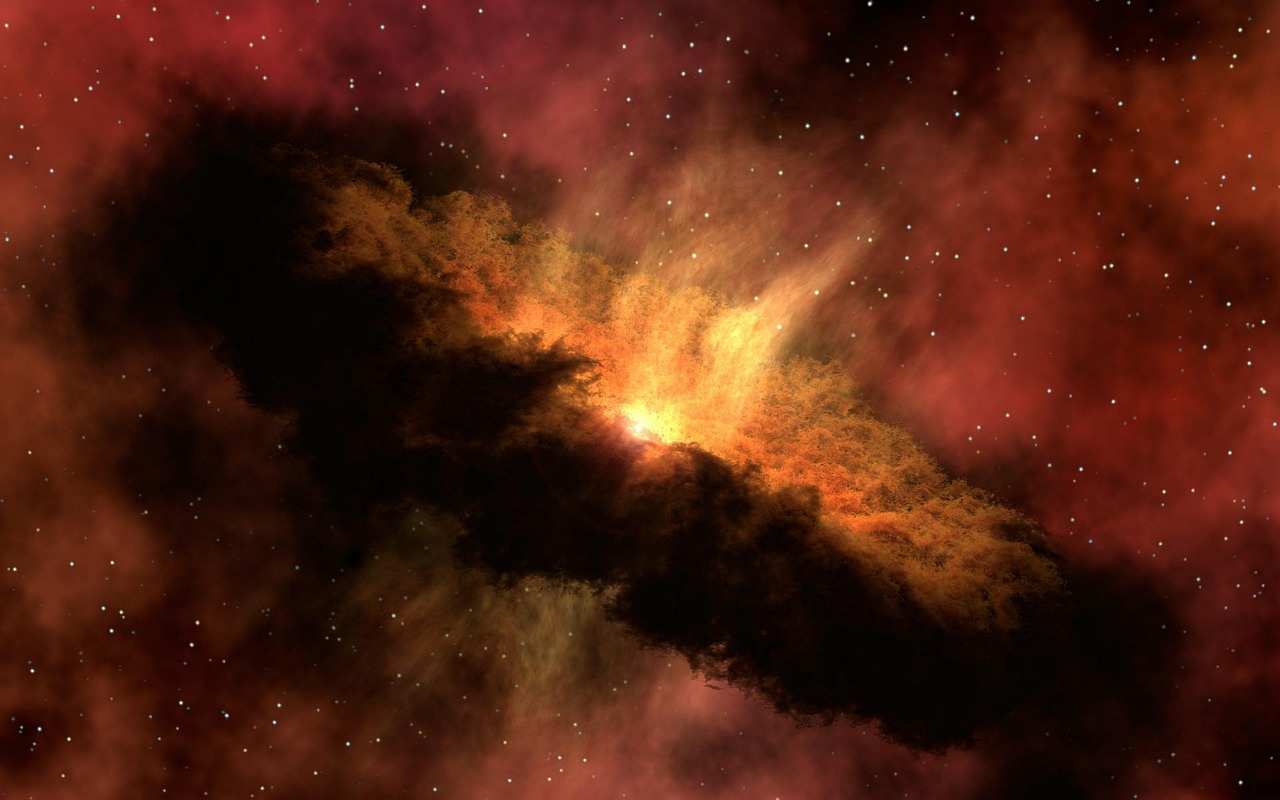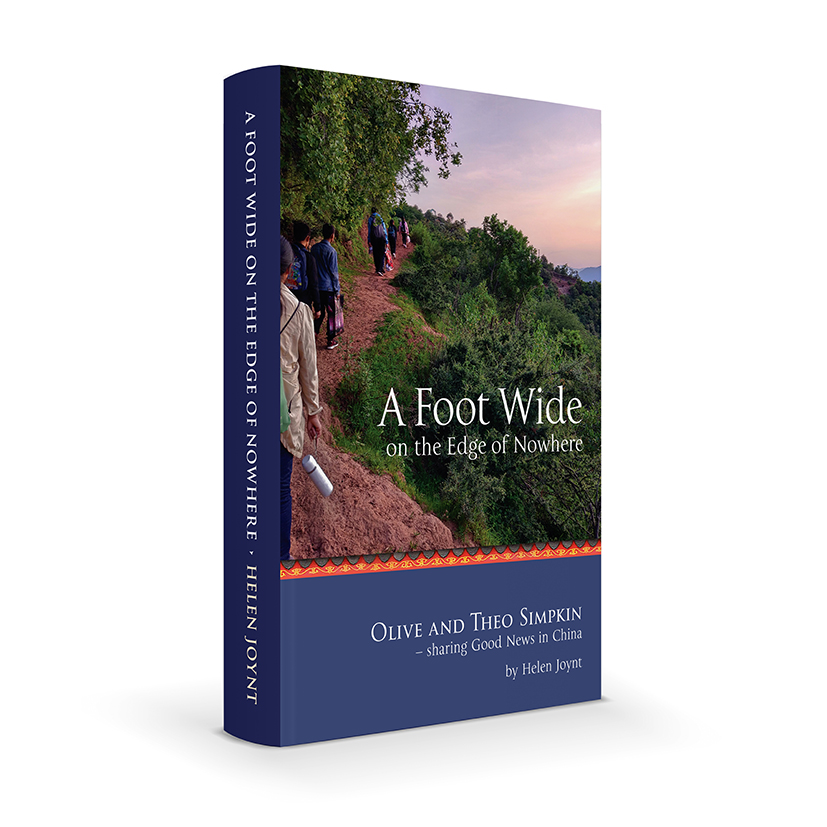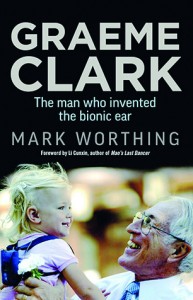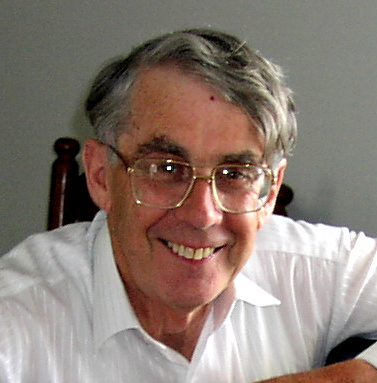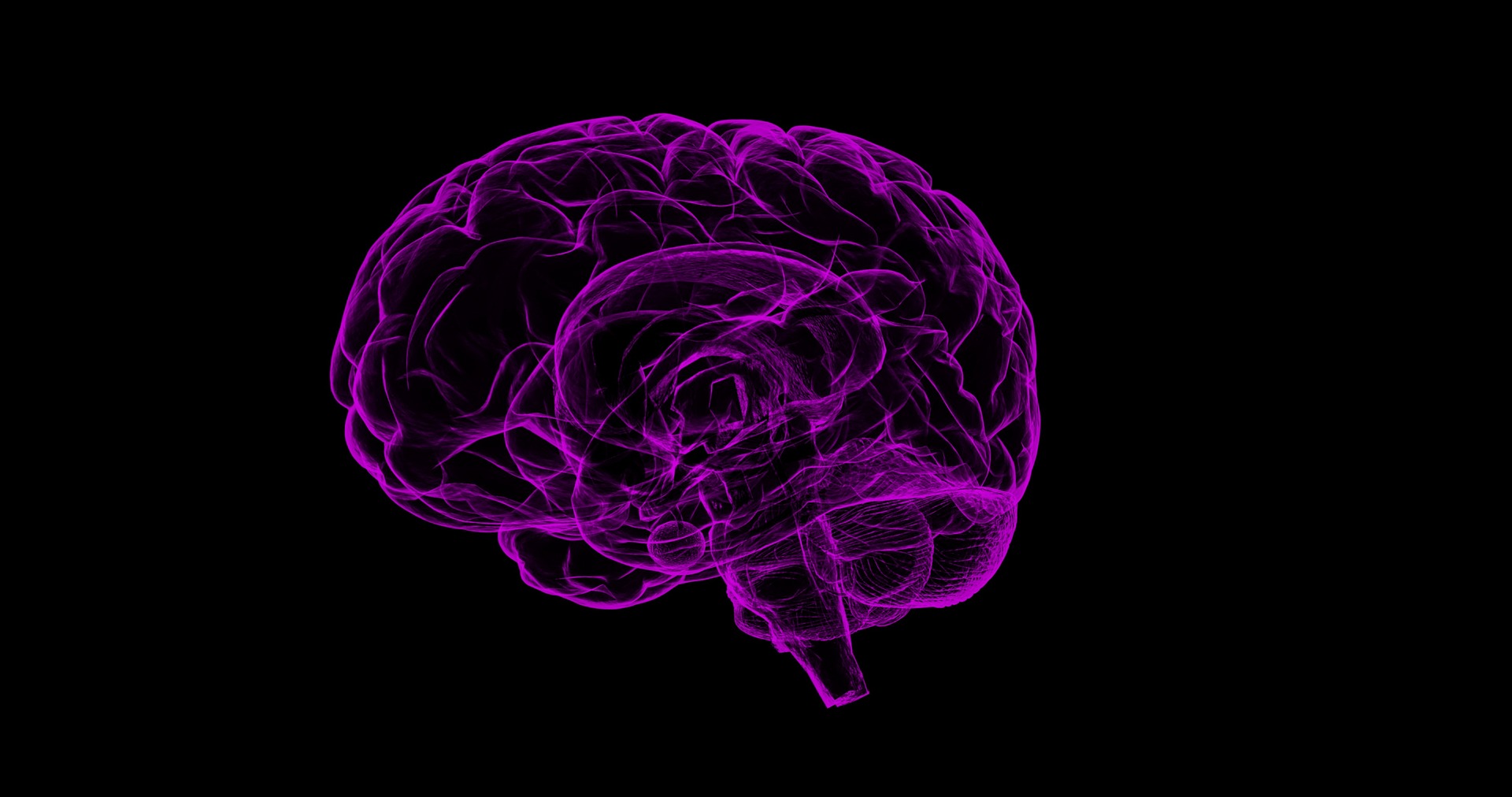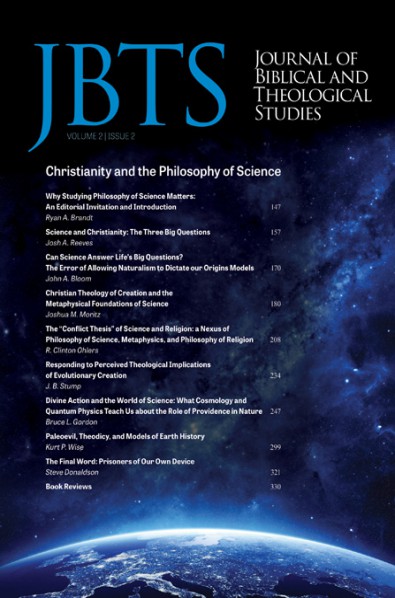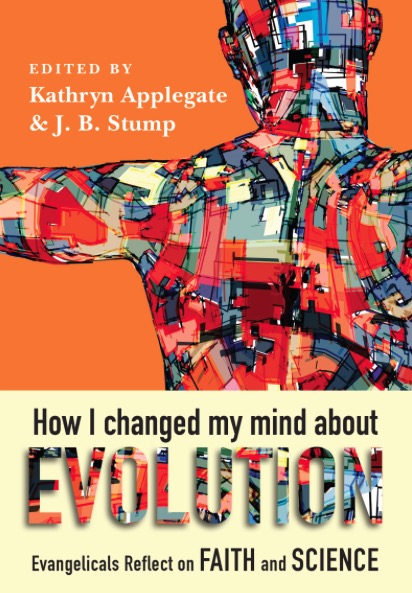


Modern Science and Christian Belief Should Be at Peace
Peter H Barry, October 2005
Modern Science and Christian Belief Should Be at Peace
Peter H Barry
Emeritus Professor, School of Medical Sciences, University of NSW
An expanded and modified version of a talk given at an ISCAST meeting in the School of Physics at the University of NSW on Monday August 29th 2005
Abstract
In this paper, I will give an overview/review of two recent books: Coming to peace with science: bridging the worlds between faith and biology by Darrell R. Falk and Random Designer: created from chaos to connect with the Creator by Richard G. Colling. In addition, I will include something of my own background and my thoughts on the science-faith issues raised by these two books.
Key words
Modern science, Christian faith, Creation and Genesis, Evolution, The age of the earth, Evangelical views, Creationism, Genetic evidence, Random designer.
Before I discuss the two books mentioned in the abstract, I would like to briefly mention something of my own experience and my thoughts on the science-faith issue.
I became a committed Christian when I was studying second year geology and physics at the University of Sydney over forty years ago, ending up with an honours degree in Physics. During that time I had found it exciting to have two concurrent experiences: gaining a greater understanding of the Biblical message of salvation in Jesus Christ, as an evangelical Christian, while learning more about the scientific processes which God had used to create the world and learning more about the basic physical processes in that world. I found it exciting to contemplate the extraordinary elegance and complexity of that world from sub-atomic particles to the universe beyond our planet. I should add that as a university student and in the years following, there seemed to me and most of my Christian friends, as we discussed and read about these issues, no disharmony between the Christian faith and modern science.
Following on from this time, in an answer to prayer as I was considering my future career, I believe that God made it clear to me that I should
change from a career in physics to doing a PhD in biophysics, which I did. This was followed by three years of post-doctoral research at UCLA, where I also met my wife-to-be, Betsy. We then went to the UK, where I had a year of research at the University of Cambridge. I then returned with her to Australia, to a career of research and teaching, eventually becoming a Professor of Physiology, and then an Emeritus Professor, at the University of NSW.
How do others see the relationship between modern science and the Christian faith? During the last few decades especially, I and many others have been concerned about the growing ‘creationist’ movements amongst some evangelical Christians tending to treat the Bible, and especially the early chapters of Genesis, as if it were a scientific textbook. For many of these people, an absolutely literal interpretation of the creation accounts in the Bible seem to be almost on a par with one of the creedal statements of Christian beliefs. Another problem with such movements is that they also try to indicate that much of modern science, particularly in areas related to creation, is grossly flawed and that all scientists involved are out to discredit Christianity.
What is the result of such attitudes? My concern is:
-
that such attitudes can cause a major crisis of faith for Christians of such movements, particularly those with some understanding of modern science, who wish to keep their intellectual integrity.
-
that such attitudes can cause other people with some scientific knowledge to discount evangelical Christianity and can drive a wedge between them and the Gospel message.
-
that such attitudes can also result in Christians who have such beliefs missing out on appreciating advances in scientific discovery that can enhance their understanding of God’s creation.
I would like to initially reflect on the creation accounts of Genesis. Many years ago I read an interesting hypothetical account by an English physicist of how Genesis I and 2 could have been written, were it to have been in current scientific language of the 20th century. I later rewrote a similar account making use of information from Jastrow (1967, 1978). It went something like this:
In the beginning, about 10 billion years ago, God created a condensed droplet of matter of extremely high density and having a temperature of many millions of degrees. Internal pressures caused the droplet to expand rapidly thereby dropping its temperature and pressure according to the principles God had ordained. The droplet consisted of basic particles-electrons, neutrons and protons. As the temperature continued to drop over a period of about 10 million years, God finally caused these elementary particles to fuse and remain fused together for increasingly long periods and so form elements such as deuterium and helium and, shortly after, the rest of the 92 elements…. After a long time God caused the rest of the Universe to cool further and
condense into galaxies and the matter within the galaxies to form stars. In fact within our own galaxy God caused the atoms of a different cloud of gas, held together by its own gravity to be drawn together. Over 10-20 million years the cloud shrank under gravitational forces to the size of our Sun. The temperature rose within the centre of the cloud igniting nuclear reactions. Thus God created the Sun. In cooler less dense regions surrounding the Sun, smaller condensations developed under the force of gravity and so God created the planets and in particular He created our earth just over 4 1/2 billion years ago.
And so we could go on describing in somewhat simplified current scientific language the origin of the Universe and the Earth and in particular human beings.
But, where would such a description have left the original readers of Genesis? They would have been mystified and confused with the concepts, let alone the language. And in a hundred years time from now such an account would no doubt have begun to be outdated and inadequate as a scientific description of creation.
What am I trying to say? To have written Genesis as a literal ‘scientific’ account of how God created the world and man, would be meaningful to a few generations of scientists only.
The message and form of the early chapters of Genesis
Probably even more important is the fact that the ancient Hebrews would not have really been interested in a scientific description of creation. God had far more important principles to communicate to them. As in the case of trying to understand exactly what Heaven is like, the only way is to use somewhat symbolic language, as in the NT book of Revelation, to try and express reality. The Genesis account was also given in a form that could be easily learned and remembered and was probably used in worship services.
In fact what is God trying to say to us in these opening chapters of Genesis? Not so much how He created the earth and mankind but rather a number of very important things about creation. For example:
-
That it was God, the God of the Hebrews and the God, whom we Christians worship, who created everything-the whole universe, the heavens as well as the earth, the animals and plants and man-all (ultimately) out of nothing.
-
That God created human beings in His image and gave them an ability to communicate and have fellowship with Himself.
-
That He gave humans a very special place in creation, and that human beings were responsible before God.
I believe that instead of a scientific, literal account, God has given us a description of the creation of the world and universe in a symbolic parable
style, appropriate for oral transmission, which would be understandable, given the world view of the original readers. It was also an account that would embody the essential truths of God’s creation in a way that would be understandable to people of every generation from the ancient Hebrews to people in the 21st century and beyond.
I strongly believe that the Bible is the inspired word of God and I believe that God is making it clear that these passages in Genesis are not to be taken as a scientific textbook style account of creation. For example, there are two different passages describing the creation. In addition, we have the situation of Cain, Adam’s son (Gen. 4:15f.), and the clearly inferred presence of other people around, who had not been previously mentioned. In Chapter 1:1 to 2:3 of Genesis we have the first account of ‘creation’, a general one written in the poetic form of a solemn liturgical recital which was probably used very early on in worship services. It makes use of the ordinary Hebrew word for God (translated in the NIV simply as ‘God’). In Chapter 2:4 to the end of the chapter (and actually going on to the end of Chapter 3 dealing with the fall), we have what appears to be a different ‘account of creation’ written with a different style, simple in form but yet written with profound spiritual insights and using in addition to the ordinary Hebrew word for God, the name that God revealed to Moses-the combination being translated in the NIV as the ‘Lord God’. The second ‘account’ particularly uses the language of parable, and concentrates on an individual man (named Adam) and a woman (named Eve). It deals with God’s creation of man, Man’s relationship and responsibility to God, Man’s need for God, the ideal life of fellowship with God, God’s creation of woman; Man’s relationship with woman and also with the rest of creation and then with the problem of evil. Two excellent commentaries by evangelical Christians on these early chapters of Genesis are Kidner 1967 and Blocher 1984.
In fact, Chapters 1 and 2 of Genesis set everything in perspective and together with Chapter 3 are absolutely necessary if we are going to understand that God created you and me, that we are each dependent on God, that we stand convicted before Him and that we need Christ’s salvation.
The Genesis accounts of creation are beautifully clear and simple in approach and yet full of very profound spiritual insight. Because of this simplicity of approach and the fact that they follow in broad outline the scientific description of the origin of the world and man, it is perhaps superficially tempting to try and take them as a single literal scientific account.
However, such an attitude was opposed even as early as in the 5th Century A.D. by no other than (St) Augustine, and even people like John Wesley and John Calvin and a good many recent evangelical theologians throughout the 20th century and many recent ones (Including, for example, many of those from Moore Theological College, Sydney; Ridley College, Melbourne and Morling College, Sydney), who all came to the
conclusion that the Bible should NOT be treated as a scientific textbook (see also Falk 2004, Ch. 1).
As The Rev. Dr. John Dickson has indicated in his work on interpreting Genesis, the Bible needs to be interpreted in terms of its historical context and literary genre, asking questions such as: ‘What was the ancient author getting at?’ and ‘How would the message have been heard by the people of the day?’ (Dickson 2004).
It has only been relatively recent that many people tried to read Genesis literally as a scientific document. In part, this has been in an over-reaction to liberalism and has gone from one extreme to the other. There have been many excellent books on this area of modern science and the Christian faith (e.g., Jeeves, Berry 1998).
I would now like to give an overview and review of the two books mentioned in the abstract. Before I do that, however, I would like to say that it is very difficult to do justice to such books in a short overview and to represent faithfully the full views of the authors. This can only really be achieved by people actually reading the books carefully for themselves.
Coming to Peace with Science: Bridging the Worlds between Faith and Biology, by Dr Darrel R. Falk
In 2004, I read and reviewed this outstanding new book on the topic of science and faith. Written by Dr Darrel R. Falk from a different viewpoint than other books on this topic, it is entitled: Coming to peace with science, with the subtitle Bridging the worlds between faith and biology. It was published in 2004 by Inter-Varsity Press (with 235 pages, including an index page).
I believe it to be an extremely timely work and that it successfully does what its title suggests, especially for
those evangelical Christians who are fearful of moving away from a literalistic view of the creation account in Genesis. Darrel Falk maintains his own strong personal faith in his Creator and Redeemer, and is particularly well qualified to address this issue, since he, himself, came from a background sympathetic to creationism. He, also, has been especially concerned about some viewpoints which threaten to open up a chasm between faith and modern science. For example, Dr Falk makes the following major point about evangelicals in the US:
If science is not really as wrong as we are being told that it is, and if a sizeable segment of evangelical Christianity continues to tell its children the things that it has been telling them, a chasm is going to open up that will increasingly make Christianity inaccessible to individuals who believe that scientific investigation has revealed the truth about the universe.
(Falk 2004, p. 25)
He discusses his own personal experiences in the book. As a young student, Darrell Falk was initially fearful that taking a course in biology might destroy his faith. Instead, he found that he really enjoyed the subject and ended up becoming a Professor of Biology, specialising in genetics and spending a number of years at a prestigious research university in New York, before taking up a position at Point Loma Nazarene University in California, in order to spend more time teaching undergraduate and graduate students. In the book he traces his own spiritual journey and its interaction with his understanding of science.
Darrel Falk outlines the major developments in modern science in relation to the creation. In addition to an analysis of how scripture should be interpreted, he also explores the major developments in modern science relating to the creation, starting with the point that God’s timescale is very different from ours, for example:
With the Lord a day is like a thousand years and a thousand years is like a day.
(2 Peter 3: 8)
He also outlines and discusses the reliability of the many different forms of scientific evidence which all point to an age for the earth of about 4.6 billion years. He discusses the reliability of radioactive dating and indicates that 40 independent isotope systems are used and that all the results are in virtual agreement. For people who have difficulty accepting radioactive evidence, he also lists very different forms of more recent evidence from such things as the oldest tree ring data (12,000 years), lake sediment data (35,000 yrs) and ice core data (180,000 years), all re- enforcing a very ancient age of the earth. He states that his
understanding of the long-term processes involved that finally produced the world as we know it today ‘all greatly increase his sense of awe at the greatness and majesty of God’.
He then discusses the fossil record and its links with the age of rocks (Falk 2004, Fig. 4.1). He considers the three alternative views of the fossil record in which God could have created life on earth (Falk 2004, p. 87):
-
each species was created one at a time from nothing in different periods;
-
species were created in bursts of creation activity, with some micro- evolution following such bursts;
-
species were created in a gradually evolving process.
He gives illustrated examples to show that the third choice is the most appropriate-the clear development of species over long time periods. To start with, he gives examples of some of the early invertebrate fossils in rocks dated about 545 million years ago, at about the beginning of the last 13% of the history of the earth (Falk 2004, Fig. 4.2). He outlines the increasing evidence of new transitional species being found and as he
investigates all the evidence, he concludes that it all points to God being an on-going guiding influence in a process involving gradual change to create all the organisms of our present world. He is also very appreciative of the fact that God has given us the privilege of being able to peer back in time to see how he has created our world. He gives a few examples of such changes. He discusses changes in elephant-like species over the last 34 million years. Within that period the species was seen to change and grew taller and the trunk became longer (Falk 2004, Fig. 4.3). He shows changes in turtles with the presence of a clear transitional species, like the Anthodon, which had unfused plates covering their bodies and other features intermediate between precursor species and fully-fledged turtles (Falk 2004, Fig. 4.4). He gives an example to illustrate transitional species in whale development. In one region in rock layers in Pakistan, a 52 million year old wolf-sized whale-like species, Pakicetus, was found with teeth like terrestrial animals. In the Sahara a 40 million year old species, Basilosaurus was found with much more whale-like features (Falk 2004, Fig. 4.5). Then in younger rocks in Pakistan, an Ambulocetus species, a transitional species between the Pakicetus and the more whale-like Basilosaurus was found. What about transitional species between fish and more land-based animals? He gives an example of a find in 1998 of a 370 million year old fish discovered with a fin bone structure very similar to a tetrapod (Falk 2004, Fig. 4.7). Specifically for the transition from fish to reptiles, he points out that, unlike fish, all living land vertebrates have a maximum of 5 digits on each limb. The only exceptions are some found about 370 million years ago (two examples, Falk 2004, Fig. 4.8), which have 8 and 7 digits, whereas the third species about 320 million years ago has 5 digits (N.B., the 3 dates in Fig. 4.8 in the book should be as indicated above and in the text, since the typographic error in the figure, though picked up by Dr Falk, was unfortunately not corrected by the printers). The two species with 8 and 7 digits represent transitional ones. The transition from reptiles to mammals can be seen around 260 million years ago as the animals started to exhibit mammalian-like features in their auditory mechanism (Falk 2004, Figs. 4.9, 4.10). What about the transition from reptiles to birds? The typical example is the Archaeopteryx, which is a transitional species about 150 million years old (seven specimens have been found) (Falk 2004, Figs 4.11, 4.12). Many other transitional bird species with some residual reptile features of about 100 million years old have also been found.
Although more and more examples of transitional species are continually being found, critics still query why more are not found. Dr Falk makes the point that new evidence indicates that the most rapid changes in species occur within small geographically isolated populations such as those found in islands and lakes, rather than in large populations where changes seem to be minimized by size of the population. He illustrates this point with some examples of Cichlid fish species development in two East African lakes (Lake Tanganyika and Lake Malawi, Falk 2004, Fig. 5.1). Here DNA analyses of different species present today in each lake, show how each species within the lake are closely related and have developed from a common ancestor to fit into the habitat niches within the lake. Though both lakes have similar looking species, the species from the two lakes are
not closely related, though they are shown to have a common distant ancestor.
He discusses the ramifications of continental drift, evidence for its occurrence, the present rates of continental movement (approximately 5 cm/yr for 100 million yrs = 5,000 km), which further support estimates of the very old age of the earth. It should be noted that it is this relative movement of the earth’s plates that can also give rise periodically to earthquakes. He discusses how continental drift has affected the way in which species developed in different parts of the world, for example, with some fossils (and rocks) on the SW edge of North Africa closely matching those on the NE edge of South America.
Dr Falk then outlines the recent revolutionary developments that are taking place in genetics. He discusses how the lineage of species can be traced by tracking genes. Although gene copying is extremely accurate and faithful, very rarely errors can occur. These are usually deleterious and are not passed on to the next generation. However, in some cases they have no effect on the gene’s final product, but do leave a ‘silent trace’ of their presence in the DNA code. Such traces allow geneticists to trace the ancestry of species.
Normally there is only one copy of a gene. In some rare cases there is a duplicate copy. If a duplicate copy is mutated and is non-functional, it doesn’t matter. Mutated duplicated genes are called pseudogenes. For example, goats have a pseudogene for haemoglobin in which a specific part of the sequence has been deleted:
The genetic code for a part of haemoglobin molecule (4 bases-Adenine, Guanine, Cytosine & Thymine) is shown below. For example, imagine that part of the correct code for the haemoglobin gene for goats is as in line
(1) below and that the copy of the gene is as in line (2) with seven bases deleted (just shown by dashes; the choice and number of deletions chosen here are just for illustrative purposes):
-
ATGGTGCACCTGACGTCCTGAGGAGAAGTCTGCCGT
-
ATGGTGCACCTGAC———–GGAGAAGTCTGCCGT
Since cows have also been shown to have the same deletion in the same pseudogene as goats, this implies that both cows and goats must have shared a common ancestor. Chimps, gorillas, orangutans and gibbons also share a common pseudogene.
In addition, sometimes, there are pieces of ‘rubbish’ known as introns that have been inserted into the code and that are recognised as such and are ignored. Retroposons (gibberish code) can sometimes also be inserted into introns. These, and silent virus insertions, can also all leave ‘silent’ genetic traces:
ATGGTGCACCTGACGTCCTGAGGAGAAGTCTGCCGT
intron
ATGGTGCACCTGACGggacttgcatccTCCTGAGGAGAAGTCTGCCGT
ATGGTGCACCTGACGggacccaattgcatccTCCTGAGGAGAAGTCTGCCGT
= retroposon-‘gibberish’
For example, assume that the lower case black letters (‘ggacttgcatcc’) are an intron and that the underlined italicised letters (‘ccaa‘) shown in red are a retroposon (in Falk’s example the retroposon is much larger; compare Falk 2004 p. 191). The presence of these genetic traces also enables distinct species to be traced back to a common ancestral species.
Hence if two different species share exactly the same silent coded trace of non-functional gibberish, it is good evidence of a common ancestor.
I believe that with the explosion in DNA sequencing, these developments are going to provide an even greater abundance of information and evidence in the coming years about the development of species.
To indicate how rapidly this field is moving using such genetic analyses, I just came across a very recent article (Nishihara 2005, Fig. 4), which outlines evidence of the ancestral, or phylogenetic, relationships of a range of very different African animals from an African elephant (and its relationship to an Asian elephant), a manatee, a dugong, a hyrax, an aardvark, a tenrec, a golden mole and an elephant shrew. All the relationships were deduced from an analysis of a number of different retroposon insertions in the genetic code of each of the above animals.
None of this type of information need pose any threat to our Christian faith at all, but rather it should give us new insights into how God has been working, and is continuing to work, in his Creation.
Dr Falk states that his conclusions and aims in writing the book are that evangelical Christians will not be made to feel that ‘sudden creation is one of the canons (or, for that matter, cannons!) of their faith’ (Falk 2004
p. 232).
He also believes that if some Christians still wish to believe in sudden creation for themselves that is fine, provided that they respect the views of others who disagree.
He finally makes it very clear that:
If there is any lesson in his book, it is that the sudden creation view is not compatible with scientific data.
(Falk 2004 p. 232)
Random Designer: Created from Chaos to Connect with the Creator by Richard G. Colling, PhD.
The second book, Random Designer: created from chaos to connect with the Creator by Dr Richard G. Colling, is published by Browning Press, Bourbonnais, Illinois, USA (208 pages including 13 pages of index and references). Dr Colling is a Professor of Biology in Microbiology at Olivet Nazarene University in Bourbonnais, and has just stepped down from being Chairman of the Dept of Biological Sciences after 23 years of growth and development.
This is an excellent, thought-provoking book, which aims to show how, given vast resources and extraordinarily long times, the sorts of random- like processes that scientists observe in natural phenomena, the vast amount of supporting scientific evidence for the development of life on earth, using such random-like processes is not only completely compatible with the creation of the world by God, but would seem to be the most efficient way in which He could have chosen to do it.
Like Dr Falk, Dr Colling is very keen to try to eliminate the gulf between science and the faith of evangelical Christians, which is generated by some atheistic scientists and, unfortunately, a number of evangelical Christians, especially in the USA.
The goal of Dr Colling’s book for the reader is:
.to develop a personal faith and cultivate a close connection with God, while at the same time fully acknowledging the scientific laws and processes that plainly govern our existence.
As he also says:
(Colling 2004 p. 9)
The truth is that science need not threaten or diminish one’s religious faith. Likewise, religious faith need not threaten or diminish science. And neither science nor faith need be sequestered from reality.
(Colling 2004, p. 10)
In addition, he believes that
.the creation-evolution debate is fruitless and even harmful to humanity.
He considers reasonably that it
(Colling 2004, p. 20)
.arises from a hopeless insistence by some that science can prove the why of our existence
(Colling 2004, p. 20)
together with an insistence by others, which is ill-informed and unfortunately can often come across as arrogant, of the view
.that faith can explain the how. of creation.
He states that:
(Colling 2004, p. 20)
Neither of these positions is reasonable nor defensible. It is time for science and faith to embrace and find common ground.
(Colling 2004, p. 20)
Random Designer is divided into two parts:
Part I: Random Design and Life
Dr Colling explores the developments of scientific discovery as they relate to the creation of our world and universe. Using random in the mathematical sense of ‘having equal opportunity of occurrence’, he explores how random processes can be used by the Creator as a very efficient way of achieving the rich complexity of life and the world as we know it today.
Part II: Random Design and Faith
Here he explores and searches for purpose and meaning in a seemingly randomness-driven world. Having reasonably stated that:
Science cannot prove or disprove God’s existence. Belief in a Master Designer is ultimately an individual decision. It is a matter of faith.
(Colling 2004, p. 106)
He goes on to show how we can enter into a personal relationship with the Creator, which in no way sacrifices our intellectual or scientific integrity.
In Part I of his book, he notes that the natural tendency for things to deteriorate, to move from an ordered state to one of less order, has been encapsulated into what is known as the Second Law of Thermodynamics (TD). As this happens both heat and total ‘free energy’ are increased. He points out that the Second Law of TD is a major driver for all physico- chemical and biological reactions. This law, which indicates that a closed system always (eventually) moves towards a lower state of order (greater entropy), has been used to argue against evolution. As we will see this argument is not valid, because our world is not a closed system. How can we explain synthetic reactions and the complexity of living systems? As Dr Colling indicates, constructive synthesis can and does take place when a significant outside energy source is available. In the presence of such an energy source, coupled reactions can be creative. The outside energy source is the sun, which directly, or indirectly, provides enough energy and results in the generation of critical molecules like glucose, for the formation of all higher life.
Dr Colling discusses how, in principle, starting from the big bang, given very long times and the resources available that spontaneous randomness-driven reactions might eventually be expected to produce simple precursor molecules that, in turn, might be able to initiate life. He then goes on to discuss how random processes and some sort of natural selection at the molecular level could, in principle, produce amino acids and proteins that would, in turn, produce living cells. He goes on to argue that a ‘trial and error’ system, which he prefers to define as a ‘trial and success’ system, is actually a very efficient way of producing the most optimum result. He suggests that a relatively small rate of genetic mutations combined with natural selection could be a very efficient way of leading to the development of species that can best survive in a certain environment. Each of the above processes he sees as being by the design of a creator. Indeed, he states:
This grand platform of mutation and selection appears to be the best and perhaps the only workable solution to the vast challenges to biological development. It is both the mechanism and the miracle that drives all of biology towards its ultimate destinations.
(Colling 2004, pp. 79, 80)
He discusses the balance between mutation rate and either
(1) adaptations and change or (2) death of the organism. He factors in the benefits of sexual reproduction to enhance genetic diversity, whilst minimizing the result of potentially lethal mutations in one of the genes. Overall, he sees that these principles:
.are the very essence of a vibrant, pulsing, and surging life. Natural selection is not at odds with the Random Designer. It is a part of His process and plan. Some people say that evolution proves there is no creator. On the contrary, evolution tells us how remarkably creative God really is!
(Colling 2004, p. 90)
He summarises the time scale of significant events in the evolutionary chronology of life on earth. The first signs of life (with C12) were found in rocks of about 3.85 billion years old. Procaryotes-cyanobacteria (anaerobic) were first dated at about 3.5 billion yrs, eucaryotes (with a true nucleus) (aerobic) at about 1.5 billion yrs, land plants at about 440 million yrs, fish at 500 million yrs, amphibians at 370 million yrs, reptiles at 300 million yrs; dinosaurs at 245 (to 65) million yrs, mammals at 210 million yrs with primates (prosimians and larger anthropoids) at about 60 million yrs. Humans (Homo sapiens) developed in Africa between 100,000 to 200,000 yrs ago and he states:
.around 45,000 yrs ago, a line of these talented and versatile modern humans radiated out to populate and subdue the rest of the world.
And the Random Designer observed all that He had created on earth, and He saw that it was very good.
(Colling 2004, p. 104)
He sees human beings as being the ‘pinnacle of creation’, both from biblical and scientific viewpoints.
Part II of the book, entitled ‘Random design and faith: searching for purpose and meaning in a randomness-driven world’, now changes tack, as Dr Collings considers the role of relationships between humans, and between humans and God, the Creator. Whereas up to this point, he sees the design process as being a physical process, which tended to be driven by selfishness, now with the birth of humanity he sees new factors coming into the equation. He discusses who Adam is and what it means to be a human being, the presence of conscience and consciousness, self awareness, an opportunity to choose between good and evil and the ability for humans
.to at least partially perceive its place in nature and actively participate in the determination of its own destiny.
(Colling 2004, p. 118)
Dr Colling illustrates how with the limitations of processing multiple concurrent inputs, the brain can miss one of them, unless we are consciously concentrating on that one input. He suggests that humans had reached that stage in their development, where they were ‘truly human’ so that now they can be aware of God as well as being self-aware, though of course they actually have to search for Him in order to see Him.
Dr Colling also points out that:
Science cannot ultimately prove or disprove God’s existence.
(Colling 2004, p. 123)
but that the question ultimately becomes one of personal faith. He also suggests that we should not draw overly simplistic conclusions about God and how he has worked, and continues to work with his creation, but rather that we should look for ‘His fingerprints’ in the depths of His created order and we should ‘exercise our faith in honest, genuine and credible ways’.
Dr Colling then explores what it means for man to be made in the image of God. He sees humans as being the culmination of the Random Designer’s creation, similar in many physiological ways to animals, yet possessing an extraordinary mind, capable of conscious awareness, having a conscience, ‘with universally shared concepts of right and wrong’, having ‘an inborn desire for connection and relationships’ and an ‘aptitude for sensing God’. He points out that up till now, the primary driving force had been one of survival, a self-centredness or selfishness, which has been of value for getting to that point in creation. He now sees that we have a new paradigm for living, particularly if there is more to life than just surviving, and that is selflessness-placing others above
oneself-which is probably more of what it means to be ‘made in the image of God’. He sees that real benefits flow from a selfless lifestyle giving us personal satisfaction (see the NT commands on loving others, which reflect the mind of God), whereas a selfish lifestyle makes us feel
bad. Human beings are also now able to discover and experience genuine love and
.satisfying relationships with others and even more significantly with God.
(Colling 2004, p. 137)
He compares the example of a new father and son relationship, with the son’s growing awareness of, and developing relationship with, his father, as reflecting a similar process of a developing relationship between us and God. He also questions, if we are unaware of Him, whether we are ‘looking right past God’, as we are overwhelmed by all the demands on our life. He suggests that the first step in a relationship is to acknowledge the other person, in this case to ‘.look up to the heavens in faith and from the depths of our souls’ call out to our heavenly Father ‘in recognition and connection’. He suggests that we are innately created with a yearning for relationships and that there is a void within our consciousness that is most satisfyingly filled by God and that this is all part of the Random Designer’s plan for us and reflects us being ‘made in the image of God’. He then discusses where God actually resides and suggests that He can in some way reside within our minds, which fits with Jesus’ statement that the ‘Kingdom of God is within you’ (Luke 17:21; though that could also be translated ‘amongst you’).
He also asks whether there is a unique part of our brain which can respond to God. He suggests that God has created us with the ability to perceive Him and that when we accept this we can enter into a genuine relationship of fellowship, connection and the continuing conviction of His reality. Dr Colling compares entering into a relationship with God to having an in-built program in our computer that we haven’t got around to trying-it could be extremely valuable, particularly if specially programmed by the computer manufacturer for our use, or it could be a waste of time or worse. He suggests that we have a built-in biological coded program designed to lead us to God. We simply need to acknowledge that such a ‘God program’ might exist. It requires some sort of a commitment to at least give God a chance and it is the experience of many people that when we do this, in a sincere way, that God does reveal Himself to us. This starts to re-orientate our attitude towards God, to change our lives and causes us to begin to experience an inner peace that comes from entering into a covenant relationship with our Creator.
He suggests that from conception, each individual has an absolutely unique identity and, that after an initial survival development, a latent spiritual dimension gradually develops and the possibility arises of considering the existence of God. Without a sense of the existence of some higher purpose and meaning in life than just survival, he suggests, life would have nothing of lasting value to offer. Each of us, therefore, has to decide for ourselves whether or not we will believe. He reasonably points out that any genuine, intimate and fulfilling human relationship must allow for the possibility of either rejection or acceptance and that the same principle is true for a relationship with God. God has created us with
a ‘built-in freedom to stumble and fail’. A personal decision to choose to believe in God leads to a relationship with God. He suggests that without such a decision, there:
.will be no genuine peace of mind, no hope in the midst of our physical suffering and .(no) ultimate meaning or purpose in life.
(Colling 2004, p. 165)
Dr Colling discusses how a person who has made such a decision can know what God’s will is for their lives. Rather than there being a carefully scripted blueprint, he suggests a more realistic alternative is that God provides universal principles for us to follow when making daily decisions, leaving the fine details up to us. He draws an analogy with his own children and their freedom to make choices, with the hope that in the light of his care for them, they will return to him and share his ‘most cherished values and maintain their relationship with him.’ Ultimately then, God’s will is very simple.
It is a call to come home-to make an effort to connect with the Creator and live in close, vital relationship with Him.
(Colling 2004, p. 170)
Dr Colling discusses this on-going relationship with God, pointing out that relationships are fragile, they need to be nurtured and perseverance is crucial. He discusses the parallel with his marriage, when after 13 years into it, he realized that his wife was more than just a spouse-she was his dearest and closest friend, whom he couldn’t imagine living without. Such a marriage requires work and commitment for the long haul. The same thing is true of our relationship with God-as we seek Him in prayer, meditation and lifestyle, He will begin to make Himself known. We should then be incrementally changing and should experience His gift of peace.
As we continue with such ‘an honest, patient and persevering faith’, we should, in his words, similarly
.experience a deepening sense of His presence, that He is more real than physical life itself, and that .(we). cannot imagine living the rest of .(our) .life without Him.
(Colling 2004, p. 174)
Dr Colling then discusses a ‘Higher order of random design’. He contrasts this to the ‘Random design’, previously described in Part I of the book, in which simple forms of life build upon one another, using mutation and selection, with the primary goal being one of survival. For the generation and development of biochemicals, cells and organisms, the basic random design principle has been that of putting ‘self first’. He now suggests that a new paradigm has come into being, which begins
.to display rudimentary elements of higher level behavior-traits like commitment, sacrifice and benevolence.
(Colling 2004, p. 175)
He suggests that higher order random design occurs when random processes are no longer random, but rather work in a coordinated way. He illustrates this by considering the role of B cells in the immune system. We have a random supply of all possible B cells being continually regenerated, each being uniquely programmed to provide just one antibody and having an intrinsic potential value. When a particular virus or bacteria strain invades the body, the appropriate B cells for that invader are activated to grow and divide, thereby multiplying, to release a large number of specific antibodies against that virus strain, which will then mark off each invader for destruction, all B cells thereby contributing to the well-being of the whole body. Like the B cells, which are not just created for themselves, Dr Colling sees us as each being unique with a God-given value and potentially able to fit into God’s plan and also live for the good of the whole community, exhibiting attributes of ‘cooperation, commitment, sacrifice and selflessness’, especially as ‘.the first and last of His creation to be made in His image.’
Dr Colling also suggests that human beings are God’s ultimate creation. This hypothesis, with support from genetics, suggests that
Biologically speaking, human beings may be the last order in a long line of created organisms.
(Colling 2004, p. 185)
In simple terms, he suggests that our chromosomes are nearly full with little room for expansion. In simple forms of life, mutations and selection were of value in producing an improved organism. He suggests that there is a fine balance with the rate of mutations between allowing for the possibility for potential improvement and also of preserving the integrity of the complex and highly evolved genes. In highly advanced beings like humans, even very slight mutations can have disastrous results. It has been suggested that the number of 30,000 genes for a human is approaching the theoretical maximum number of sustainable genes. Dr Colling suggests that:
.even from the scientific perspective, it appears that human beings may indeed be the Random Designer’s ultimate creation. If the above conclusion is correct, then it also raises the interesting possibility that we were the goal of His creation from the beginning of time.
(Colling 2004, p. 187)
If this is true and if he has also left
.a pathway for us to discover Him and enter into a special coveted relationship.
(Colling 2004, p. 188)
with Him, then we ought to do something about it. We have been created
.for a purpose..All the forces and laws of nature were put in place to bring us into existence.
and to bring us into a relationship with our Creator.
(Colling 2004, p. 189)
.for those who can discern it, there is the promise of purpose and peace.
(Colling 2004, p. 191)
All it needs is ‘.a single step of faith!’ (Colling 2004 p. 191)
It should be noted that Dr Colling is a strongly committed evangelical Christian and that he has chosen to write his book so that it can have a general applicability for both Christians and for people of other faiths as well. For Christians especially, there is, of course, a lot that could be added in Part II of the book particularly with respect to the Biblical revelation and the Biblical principles that relate to entering into a relationship with our Creator and the Gospel message itself, but to have added such material explicitly would have not been appropriate for the wider audience for whom Dr Colling was writing.
In conclusion, as we learn more about our universe, our world and its development, about the incredible complexity of living organisms and their development, we can only marvel with the psalmist (Ps. 8, NIV) and say:
0 Lord, our Lord how majestic is your name in all the earth… When I consider your heavens, the work of your fingers,
the moon and the stars, which you have set in place, what is man that you are mindful of him,
the son of man that you care for him?
This is the God whom we, as Christians, worship, the creator of our world and universe. The wonder of it is that Jesus Christ, God’s Son, died on the cross on our behalf, so that we could come into a personal relationship with our Creator, provided we respond appropriately.
I would like to conclude with three further comments.
-
-
It is broadly accepted that modern science actually developed in the West because of the Hebrew-Christian view of our world, as having been created by God. Indeed, a considerable number of outstanding scientists, who have played a major role in this development, had a strong personal faith in God and most of the others at least had some view of God as a creator.
-
I have been working with scientists in a university environment in Australia, the UK and USA, for over forty years and I have come across a considerable number of scientists who are either Christians or are at least sympathetic to Christian values. Indeed I have been constantly surprised and encouraged at the number of scientific colleagues, both senior and junior, whom I have met over the years who have a personal faith in Jesus Christ.
-
I would also like to reiterate that Christians have nothing to fear from advances in scientific knowledge. Indeed we should welcome such advances as giving us greater insight into the power and majesty of the God we worship.
References and Other Reading
Blocher, H 1984, In the beginning: the opening chapters of Genesis, Inter-Varsity Press, Leicester, UK.
Brooks, J 1985, Origins of life: from the first moments of the universe to the beginning of life on earth, Lion Publishing, Tring, UK.
Colling, RG 2004, Random Designer: created from chaos to connect with the Creator, Browning Press, Bourbonnais, Illinois.
Dickson, JP 2004, ‘The genesis of everything: the thought-world of the Bible’s account of creation’, A CASE/ISCAST talk given at New College, The University of NSW, in March 2004.
Falk, DR 2004, Coming to peace with science: bridging the worlds between faith and biology, InterVarsity Press, Downers Grove, Illinois.
Jastrow, R 1967, Red giants and white dwarfs: the evolution of stars, planets and life, Harper and Row, New York.
Jastrow, R 1978, God and the astronomers, Warner Books, New York.
Jeeves, MA, Berry RJ 1998, Science, life and Christian belief: a survey and assessment, APOLLOS (an imprint of Inter-Varsity Press), Leicester, UK.
Kidner, D 1967, Genesis: An Introduction and Commentary, Tyndale Old Testament Commentaries, The Tyndale Press, London.
Nishihara, H, Satta, Y, Nikaido, M, et al. 2005, ‘A retroposon analysis of Afrotherian phylogeny’, Molecular Biology and Evolution 22: 1823-1833.
